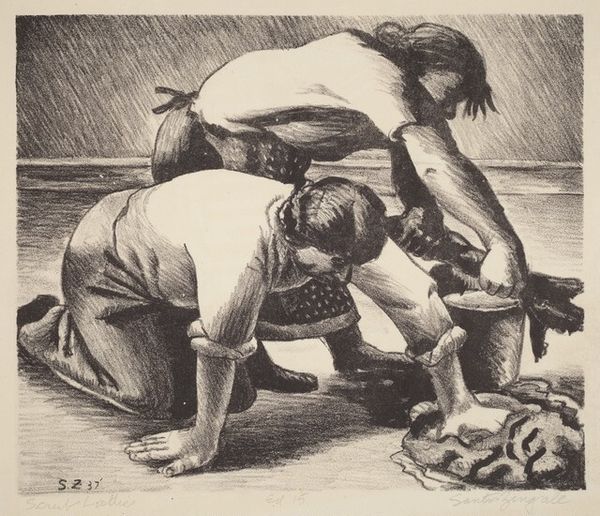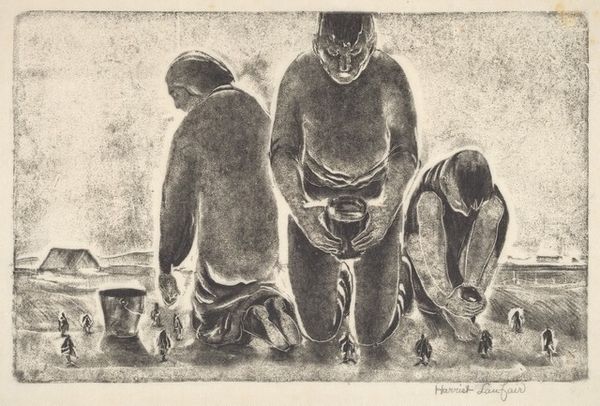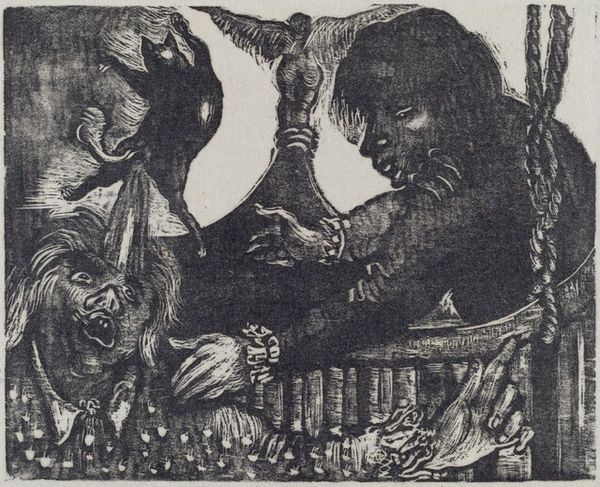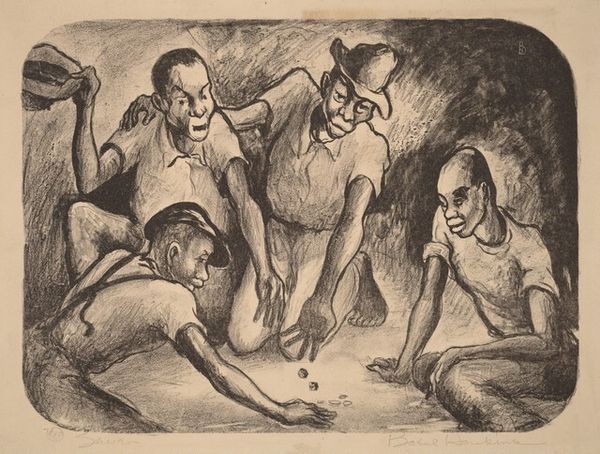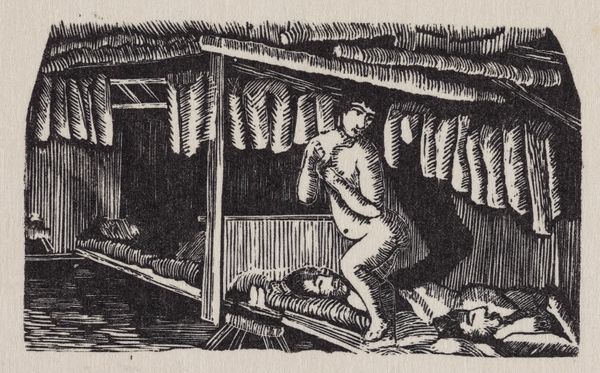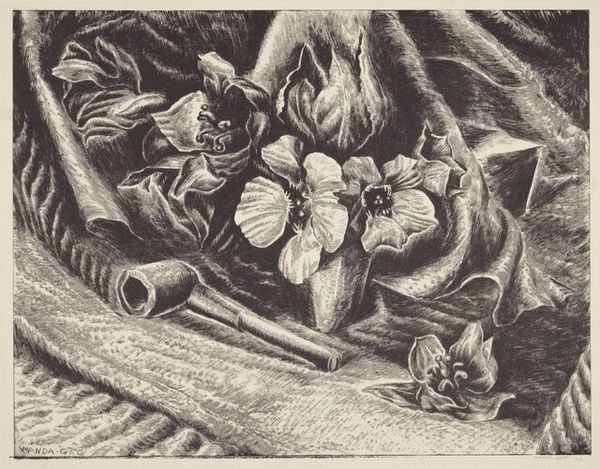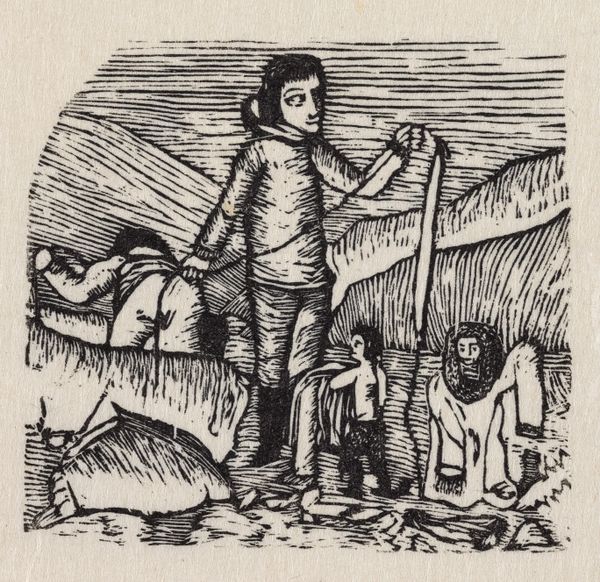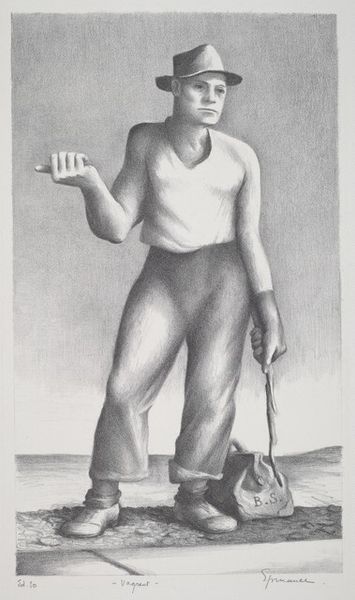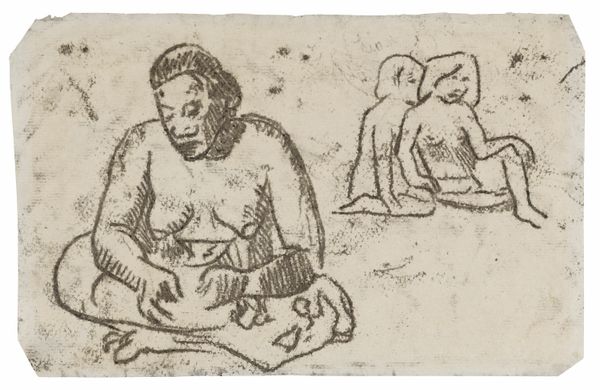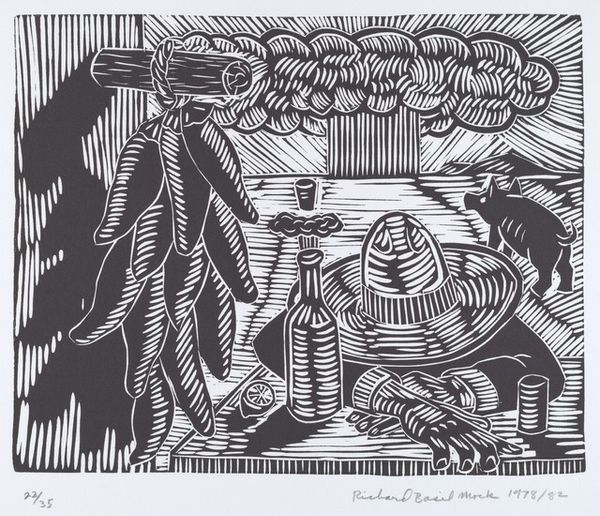
drawing, print, charcoal
#
portrait
#
pencil drawn
#
drawing
#
narrative-art
# print
#
landscape
#
charcoal drawing
#
pencil drawing
#
mexican-muralism
#
portrait drawing
#
charcoal
#
realism
Copyright: National Gallery of Art: CC0 1.0
Editor: We’re looking at “Henequén Worker,” a 1945 print by Alfredo Zalce. The intense crosshatching creates an almost palpable sense of weight, both in the figure and the spiky plant he’s harvesting. What elements of the composition strike you most? Curator: The interplay between light and shadow, meticulously rendered through crosshatching, defines the figure's form and imbues it with a striking sculptural quality. Note how the linear density shifts to model the contours of the body and the plant. Editor: I see that! It's almost like he's carving the figure out of darkness, using the light to reveal the form. Curator: Precisely. Also, consider the spatial arrangement. The figure's dominance in the foreground and the dense foliage creates a somewhat claustrophobic effect, flattening the picture plane. It almost feels like a stage. Editor: Yes, the compressed space definitely emphasizes the figure's labor. What about the figure’s positioning? Is the fact that his head is facing down meaningful? Curator: Most assuredly. The bowed head directs our gaze towards the tools and the immediate task at hand, focusing on the manual act of labor and the intimate connection between the worker and his materials. Editor: That makes a lot of sense. It really draws attention to the act of physical labor. I appreciate how focusing on the formal elements allows us to delve into deeper readings. Curator: Indeed. By attending to these details we reveal not only the subject but also a discourse on form and technique.
Comments
No comments
Be the first to comment and join the conversation on the ultimate creative platform.
